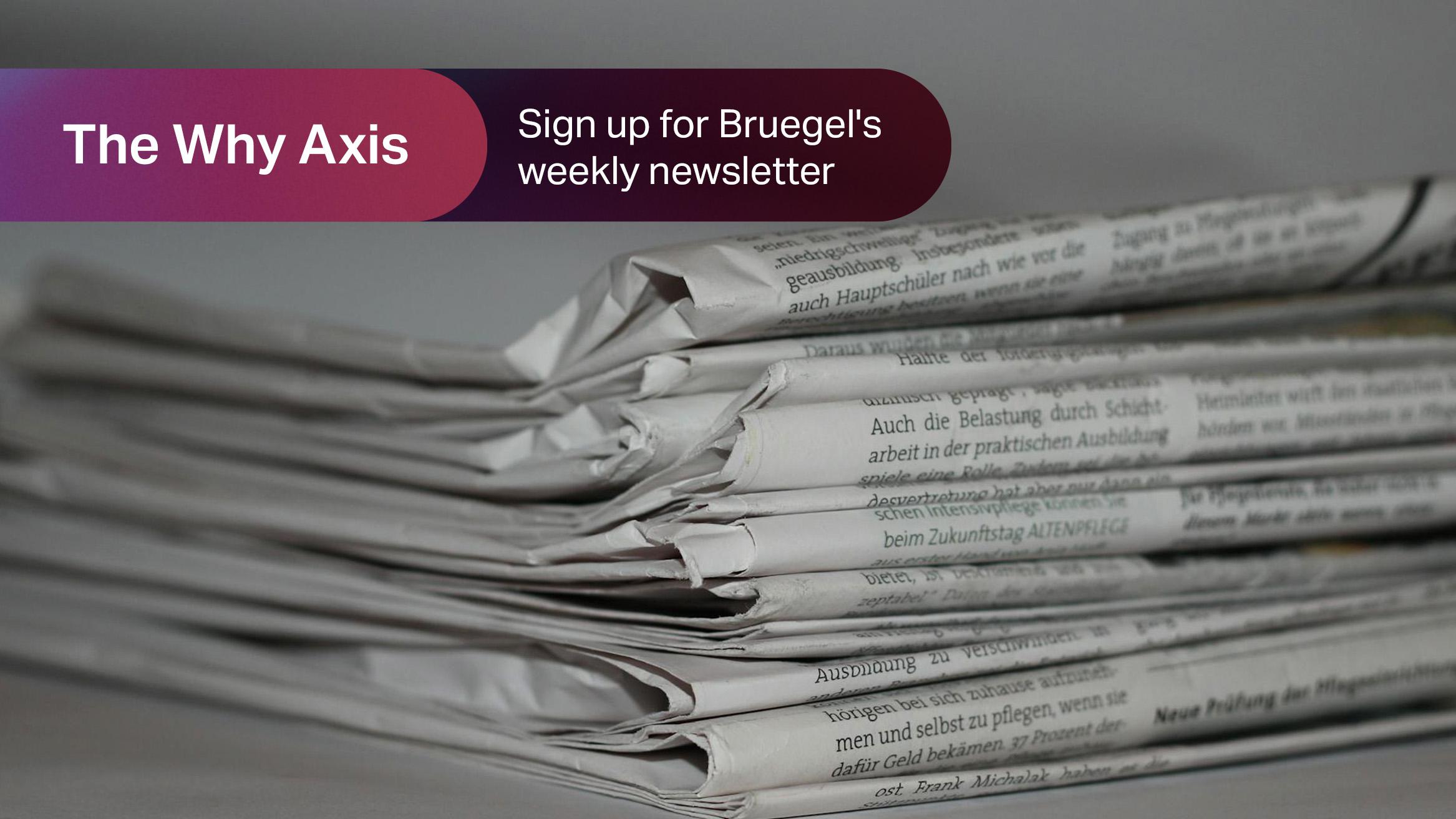How has Europe’s gender wealth gap evolved, and why? – Bruegel

Report on Gender Wealth Inequality in the European Union and its Implications for Sustainable Development Goals
Introduction: A Challenge to SDG 5 (Gender Equality)
Despite significant progress in female education and labour market participation, a recent study indicates a persistent and widening gender wealth gap in the European Union between 2010 and 2021. This trend presents a substantial obstacle to achieving Sustainable Development Goal 5 (Gender Equality) and its target of ensuring women’s full and effective participation and equal opportunities for leadership at all levels of economic life. The failure to translate gains in employment into equal wealth accumulation undermines broader efforts towards SDG 10 (Reduced Inequalities).
Analysis of the Gender Wealth Gap (2010-2021)
Key Findings from European Central Bank Data
- Analysis of single, working-age individuals reveals no significant gender gap in average wealth across the EU.
- However, a clear distributional pattern emerges when controlling for socioeconomic characteristics, showing that the wealth gap widens sharply among the middle class and the most affluent groups.
- While wealth levels are similar among less-prosperous individuals, the disparity at higher wealth levels indicates a systemic barrier to economic equality, directly impacting the targets of SDG 10.
Factors Contributing to Wealth Disparity and Hindering SDG Progress
- Asset Ownership and Entrepreneurship: Men demonstrate higher rates of property and business ownership, which are critical drivers of wealth accumulation. This disparity in asset control is a core challenge to achieving economic empowerment under SDG 5 and fostering inclusive growth as outlined in SDG 8 (Decent Work and Economic Growth).
- Investment Behaviour: Men are more likely to invest in higher-risk, higher-return assets, accelerating their wealth accumulation. In contrast, women tend to hold safer, lower-return assets like deposits, which limits their economic growth potential.
- Educational Advantage Insufficiency: Women’s superior educational attainment does not sufficiently counteract the effects of differing investment behaviours and lower rates of self-employment, highlighting a disconnect between educational achievement and economic outcomes.
Regional Variations and Policy Recommendations for Achieving SDGs
Country-Specific Disparities
- Significant differences exist between EU member states, indicating that national institutional settings, inheritance laws, and cultural norms heavily influence progress towards SDG 5.
- Some nations, such as Czechia and Lithuania, have nearly closed or reversed the gender wealth gap.
- Conversely, countries like France and the Netherlands exhibit a substantial wealth advantage for men.
Policy Imperatives for Advancing Gender Equality in Wealth
The findings reveal that progress in closing gender gaps in employment and earnings is not sufficient to ensure wealth equality. A new divide in asset ownership and capital accumulation is emerging. To achieve the targets set forth in SDG 5 and SDG 10, targeted policy interventions are required.
- Financial Literacy Initiatives: Policies must be implemented to encourage and empower women to build wealth through enhanced financial education.
- Support for Female Entrepreneurship: Greater support for female-led businesses is essential to close the gap in business ownership and facilitate faster wealth accumulation for women.
Without dedicated policies addressing these structural barriers, achieving genuine gender equality in economic terms will remain a distant goal.
1. Which SDGs are addressed or connected to the issues highlighted in the article?
The article on the gender wealth gap in Europe connects to several Sustainable Development Goals (SDGs) that focus on equality, economic growth, and reducing disparities.
-
SDG 5: Gender Equality
This is the most central SDG addressed. The entire article revolves around the economic inequality between men and women, specifically the “gender wealth gap.” It highlights that despite gains in education and employment, women are falling behind in wealth accumulation, which is a core component of gender equality. The call for policies like “financial literacy initiatives and support for female entrepreneurship” directly aims to achieve gender equality in economic life.
-
SDG 8: Decent Work and Economic Growth
The article discusses key components of economic life, such as labour market participation, running businesses (entrepreneurship), and investment. The finding that men are more likely to “run businesses and invest in higher-risk, higher-return assets” points to disparities in economic opportunities and outcomes, which are relevant to achieving full and productive employment and economic growth for all.
-
SDG 10: Reduced Inequalities
This goal focuses on reducing inequality within and among countries. The article’s analysis of the wealth gap between men and women within the European Union is a direct examination of intra-country inequality. It explicitly notes that “the gap widens sharply among the middle class and the most affluent groups,” highlighting a distributional pattern of inequality based on gender and economic status.
2. What specific targets under those SDGs can be identified based on the article’s content?
The article’s discussion of wealth, asset ownership, and entrepreneurship allows for the identification of several specific SDG targets.
-
Under SDG 5 (Gender Equality):
- Target 5.a: “Undertake reforms to give women equal rights to economic resources, as well as access to ownership and control over land and other forms of property, financial services, inheritance and natural resources…” This target is directly relevant as the article states that “Men are more likely to own property, run businesses and invest,” which points to an imbalance in access to and control over economic resources and property.
- Target 5.5: “Ensure women’s full and effective participation and equal opportunities for leadership at all levels of decision-making in political, economic and public life.” The disparity in business ownership (“men are more likely to… run businesses”) and the call to provide “support for female entrepreneurship” relate directly to ensuring women have equal opportunities in economic life.
-
Under SDG 8 (Decent Work and Economic Growth):
- Target 8.5: “By 2030, achieve full and productive employment and decent work for all women and men… and equal pay for work of equal value.” While the article notes gains in employment, the widening wealth gap suggests that this has not translated into equal economic outcomes. The discussion on entrepreneurship and asset accumulation is an extension of achieving “full and productive” economic engagement for women beyond just employment.
-
Under SDG 10 (Reduced Inequalities):
- Target 10.2: “By 2030, empower and promote the social, economic and political inclusion of all, irrespective of… sex…” The article’s conclusion that Europe needs “policies that encourage women to build wealth” is a direct call to action to promote the economic inclusion of women and reduce the wealth inequality highlighted.
3. Are there any indicators mentioned or implied in the article that can be used to measure progress towards the identified targets?
Yes, the article explicitly and implicitly refers to several indicators that can be used to measure progress.
-
Gender Wealth Gap
This is the primary indicator discussed throughout the article. The study’s main finding is that the “gender wealth gap widened from 2010-2021.” Measuring the difference in net worth between men and women is a direct way to track progress on wealth equality.
-
Asset Ownership by Gender
The article specifies the types of assets where disparities exist. An indicator would be the proportion of women versus men who own specific assets. The text mentions that “Men are more likely to own property, run businesses and invest in higher-risk, higher-return assets,” while women “tend to hold safer, lower-return assets such as deposits.” Tracking these ownership patterns is a key metric.
-
Rate of Female Entrepreneurship
The article points out that men are more likely to “run businesses” and suggests “support for female entrepreneurship” as a solution. Therefore, the proportion of businesses owned or run by women serves as a crucial indicator of their participation in economic life and progress towards Target 5.5.
-
Financial Literacy Levels by Gender
The recommendation for “financial literacy initiatives” implies that a gap in financial knowledge may contribute to the wealth gap. Measuring and comparing the financial literacy levels of men and women can serve as an indicator to track the effectiveness of such policies and progress towards women’s economic empowerment.
4. Table of SDGs, Targets, and Indicators
| SDGs | Targets | Indicators |
|---|---|---|
| SDG 5: Gender Equality | Target 5.a: Equal rights to economic resources, ownership and control over property and financial services. |
|
| SDG 5: Gender Equality | Target 5.5: Ensure women’s full participation and equal opportunities in economic life. |
|
| SDG 8: Decent Work and Economic Growth | Target 8.5: Achieve full and productive employment and decent work for all women and men. |
|
| SDG 10: Reduced Inequalities | Target 10.2: Empower and promote the economic inclusion of all, irrespective of sex. |
|
Source: bruegel.org
What is Your Reaction?
 Like
0
Like
0
 Dislike
0
Dislike
0
 Love
0
Love
0
 Funny
0
Funny
0
 Angry
0
Angry
0
 Sad
0
Sad
0
 Wow
0
Wow
0




















































.jpg.webp?itok=0ZsAnae9#)

























